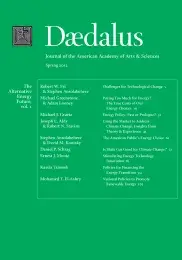The American Public’s Energy Choice
Public opinion about energy can be understood in a unified framework. First, people evaluate key attributes of energy sources, particularly a fuel’s cost and environmental harms. Americans, for example, view coal as relatively inexpensive but harmful, natural gas as less harmful but more expensive, and wind as inexpensive and not harmful. Second, people place different weights on the economic and environmental attributes associated with energy production, which helps explain why some fuels are more popular than others. Americans’ attitudes toward energy are driven more by beliefs about environmental harms than by perceived economic costs. In addition, attitudes about energy sources are largely unrelated to views about global warming. These findings suggest that a politically palatable way to reduce greenhouse gas emissions is through regulation of traditional pollutants associated with fossil fuels, rather than a wholly new carbon policy.
Americans do not directly buy the coal, natural gas, or uranium used to generate nearly all the electricity in the United States. Nor do they see, smell, or feel those fuels when they use electricity. In that respect, electricity consumption differs fundamentally from most other consumption goods, including our main transportation fuel, gasoline. Nonetheless, Americans have definite opinions about the best way to generate electricity because the fuels used have immediate effects on their electricity bills, as well as on economic growth, national security, and the local and global environments. Americans want less reliance on coal and oil; they want expanded use of wind and solar power; they want to continue and even expand use of natural gas; and they are deeply torn about nuclear power.1
A basic goal of public opinion research on energy is to understand how Americans view their energy choices. Are they content with the existing ways that we generate electricity, or do they want to change significantly the fuels that power the country? If the latter, what drives that preference? How important a factor is global warming, or security, or affordability? The importance of energy as a truly public policy matter has never been greater. Challenges of global warming, economic competition, possible oil scarcity, and attendant questions of national security have pushed energy production high on the national policy agenda. In many respects, the environmental movement and public backlash over oil prices in the 1970s were only preludes to the challenges we face today.
. . .
